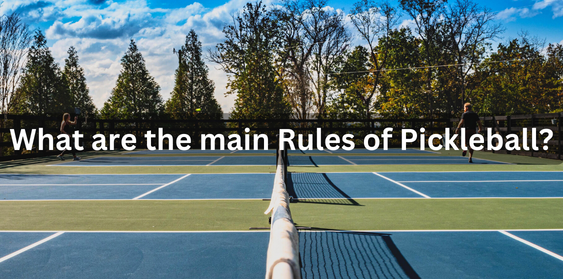Pickleball, a sport that combines elements of tennis, badminton, and table tennis, has gained tremendous popularity in recent years. With its easy-to-learn rules and social appeal, it’s no wonder that more and more people are flocking to the courts to enjoy this exciting game.
Whether you’re a beginner or a seasoned player, understanding the essential rules of pickleball is crucial for a fair and enjoyable match. In this post, we’ll dive into the fundamental rules that govern the game, helping you enhance your skills and make the most of your pickleball experience.
1. Court Dimensions
Pickleball is typically played on a rectangular court that measures 20 feet by 44 feet for doubles and 20 feet by 22 feet for singles. The court is divided into non-volley zones, commonly known as the kitchen, and includes baseline and sideline boundaries.
2. Serving:
- The server must stand behind the baseline and serve the ball diagonally across the net to the opponent’s service court.
- The serve must be underhand, and the paddle must make contact with the ball below the server’s waist.
- The ball must land in the opponent’s diagonal service court, and the receiving team cannot return the serve until it bounces once.
3. Double Bounce Rule
- After the serve, both the serving and receiving teams must let the ball bounce once on each side before volleying (hitting the ball in the air).
- The double bounce rule ensures that players have an equal opportunity to reach and play the ball at the beginning of each point.
4. Non-Volley Zone (Kitchen)
- A critical aspect of pickleball is the non-volley zone, also known as the kitchen, which extends 7 feet from the net on both sides.
- Players cannot volley the ball (hit it in the air without bouncing) while standing inside the non-volley zone. However, players can step into the kitchen to play a ball that has bounced.
5. Scoring
- Pickleball is typically played to 11 points, and a team must win by at least two points.
- Only the serving team can score points, and if the receiving team wins a rally, they earn the right to serve.
- The server calls out the score before each serve with their team’s score announced first.
6. Faults
- Various faults can occur during a game, such as stepping on the non-volley zone line, hitting the ball out of bounds, or volleying before the ball has bounced once on each side.
- Faults result in the loss of the rally and the opportunity to score a point.
Conclusion
Mastering the essential rules of pickleball is essential for enjoying the game and playing it competitively. Whether you’re aiming to improve your skills or introducing someone new to the sport, understanding the fundamentals creates a foundation for fair play and sportsmanship. So, grab your paddle, head to the court, and let the thrilling rallies of pickleball begin!


